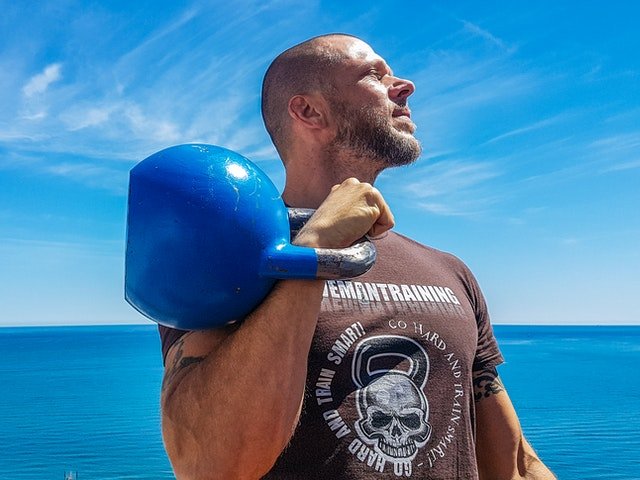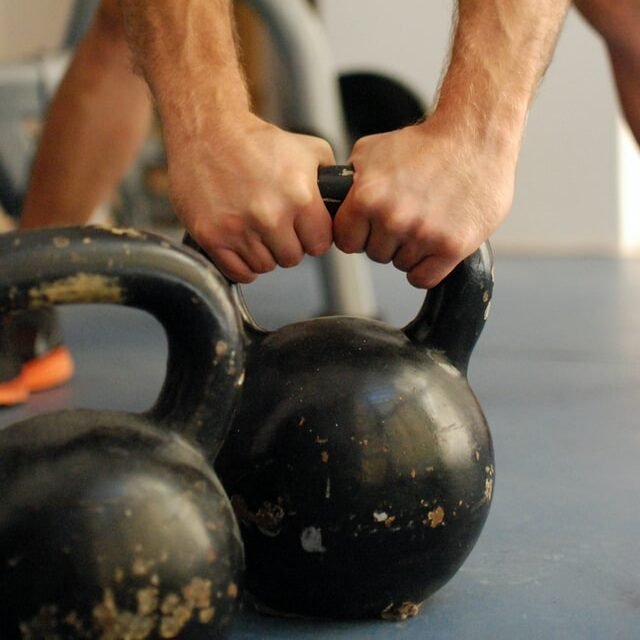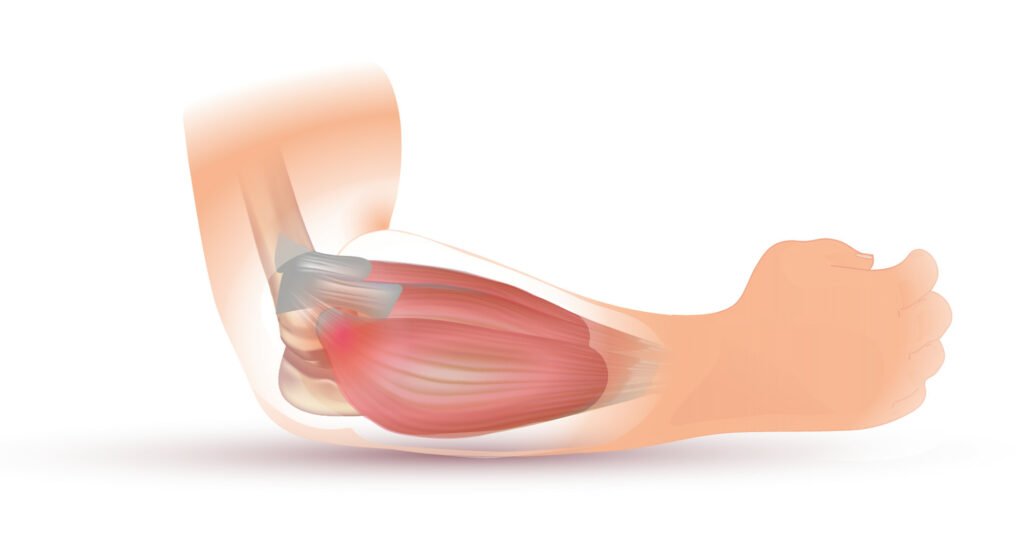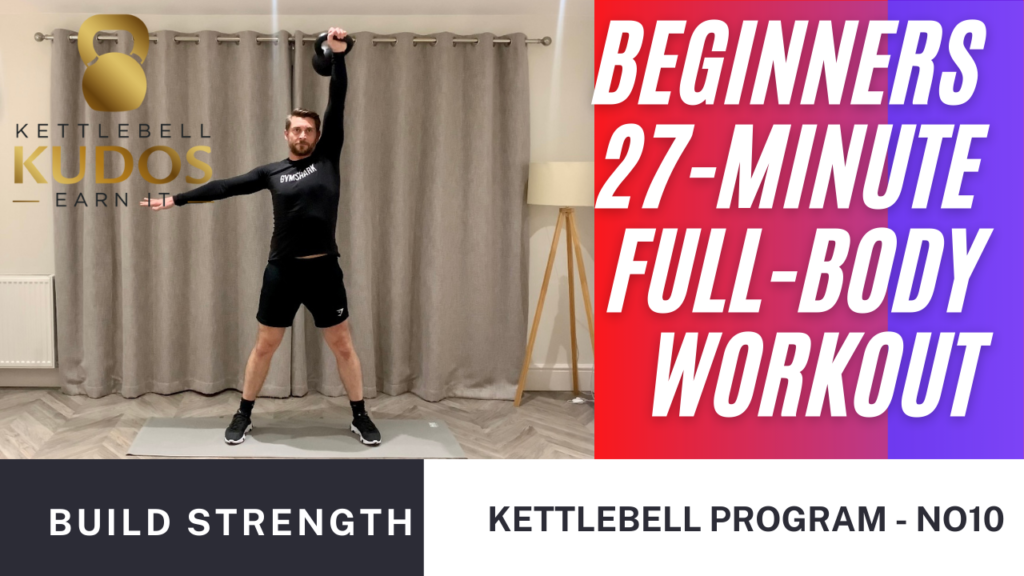Kettlebell Press And Elbow Pain? (Heres Some Reasons Why)
One of the lesser mentioned issues people have when using kettlebells, is getting elbow pain when doing a press.
There could be a few reasons why this is the case, hopefully the problem isn’t serious enough to the point of needing to completely stop working around the area in question or the need to seek medical advice.
So why do you get elbow pain when pressing a kettlebell? Let’s take a look.
Kettlebell Press And Elbow Pain?
Getting elbow pain when pressing a kettlebell can happen for a number of reasons, the most common reason would be down to the fact your technique may need slight adjustment. Having an incorrect hand position or bent wrist when the kettlebell is racked on your forearm, can put a large amount of stress on the muscles and ligaments. Other things such as the intensity of the grip on the handle or not having a strong enough grip can lead to pain also. Maybe you have previously had and injury in or around the elbow area before and the use of a kettlebell may have aggravated it? Over rotating the wrist in either direction can also cause extra stress and fatigue on the muscles and ligaments around the elbow area.
Correct Technique
Having the correct technique when performing any kind of exercise is extremely important. I know we are built differently and some may find certain exercises easier than others, I know I do. Thats why it’s critical that your form is bang on.
When pressing a kettlebell, there’s a few things you can look out for which may help reduce and stop any kind of elbow pain.
Check Out That Rack
Firstly, make sure that when you “rack” the kettlebell on your forearm, that you cushion it as it flips over. Letting the kettlebell slam onto your forearm can bruise and damage on a superficial level, but also on a muscular level also.
When racking make sure you push/force the kettlebell to change its momentum as it swings when racking, to allow the balance of weight shift from the handle into the kettlebell.
Doing this will make for a good soft racking on the forearm without it smacking at speed.
This can take some time to perfect, but once you get the hang of it, will improve your kettlebell game no end!
Also make sure that when you have the kettlebell racked, the line from your arm and hand is straight. What I mean is, make sure your wrist isn’t bent back.
Doing this will not only give you wrist pain or strain, but also not having a good straight line in your arm may weaken and harm the forearm muscle and ligaments as the arm and wrist isn’t engaged as it should be.

Death Grip
The second thing to look out for when doing a kettlebell press is your grip.
This is like the story of “Goldilocks and the three bears” in that your grip can’t be too tight or too loose. It has to be “just right” like the porridge our little friend ate in that wonderful beloved children’s story.
You can’t grip the kettlebell too tight, doing so will cause muscle and ligament fatigue, which will eventually do damage to the forearm and elbow area depending on your hand position and any over use of wrist rotation.
We are all guilty of holding the kettlebell as if our lives depended on it when we first use them or increase the weight.
Keep a tight postural frame and steady grip, if you are finding your grip is too tight all the time, this might be down to having a kettlebell which is too heavy for the exercise you are doing. reduce the weight and see how it feels.
Hold the kettlebell with conviction, but not a death grip. Holding it too loose will yank and jerk your joints. Once again, this will put extra strain on your entire arm, shoulder and back with continual use.
Find that sweet spot.

Wrist Rotation
Another thing to look out when pressing is too much wrist rotation. Too much rotation in the wrist can set off the same pain which people feel when having Tennis elbow or Golfers elbow (more on this below).
Watch out for too much rotation as the kettlebell is either swung back down from the press or the racked position, or even when the kettlebell is swinging between your legs.
Elbow diagnostics
There are two key injuries associated with elbow pain – Tennis elbow and Golfers elbow.
Tennis elbow (lateral epicondylitis) causes pain around the outside of the elbow.
Pain that occurs on the inner side of the elbow is known as Golfers elbow.
It often happens after overuse or repetition of the muscles in the forearm near the elbow joint.
Tennis elbow is usually caused by overusing the muscles attached to your elbow and used to straighten your wrist.
If the muscles are strained, tiny tears and inflammation can develop near the bony lump (the lateral epicondyle) on the outside of your elbow.

If you notice pain on the outside of the elbow that travels down the forearm when:
- lifting or bending your arm
- when gripping small objects, such as a pencil
- when twisting your forearm, such as turning a door handle or opening a jar
It may difficult to fully extend your arm.
Rest your injured arm and stop any activity that’s causing the problem.
Holding a cold compress wrapped in a towel, against your elbow for a few minutes several times a day can help ease the pain and inflammation.
Taking painkillers is an option, such as paracetamol, may help reduce mild pain, while Ibuprofen, can also be used to help reduce inflammation.
Physiotherapy may be recommended in more severe cases.
Massaging and manipulating the affected area may help relieve the pain and stiffness and improve the range of motion in your arm.
Surgery may be used as a last resort to remove the damaged part of the tendon.
Tennis elbow and Golfers elbow can last between 6 months to 2 years, but a full recovery is made within a year in 9 out of 10 cases.
Final Thoughts…
Kettlebell press and elbow pain is something that can be very painful if it’s not allowed to recover and you continue to use through the pain barrier.
If the pain doesn’t ease even when you aren’t training after a few weeks, then it’s worth seeking the advice of a medical professional.
Either way, rest and recovery are the best options when it comes to elbow pain. I have experienced tennis elbow myself and it’s a different type of pain to muscular injuries.
It can also be very frustrating as it feels like it is taking forever to heal. Be patient and lay off the kettlebells for a while or do an alternative physical activity that doesn’t involve the use of these muscles.
All the best and I wish you a speedy recovery.
If you enjoyed this, then please check out the YouTube channel, with over 60 workouts which include the use of kettlebells, resistance bands, dumbbells and even body weight exercises too.
Don’t forget, I will be adding more workouts weekly to help you stay fit and healthy at home with just the use of a kettlebell.
With workouts of all types, for all fitness levels. You know that we have you covered, so stay tuned for more.
If you enjoy sport and use CBD to help with your recovery in between gruelling workouts, then your are in the right place. Here at Sport CBDs, we train hard and recover the best way possible…
We have regular workouts (check out the YouTube channel), CBD news and CBD products to help you gain that edge!
If you wanted to check out the reputable CBD we have on offer here at the site, then please head to the Sport CBDs Store. We also do fitness clothing and yoga accessories too.
Untill next time, all the best…


